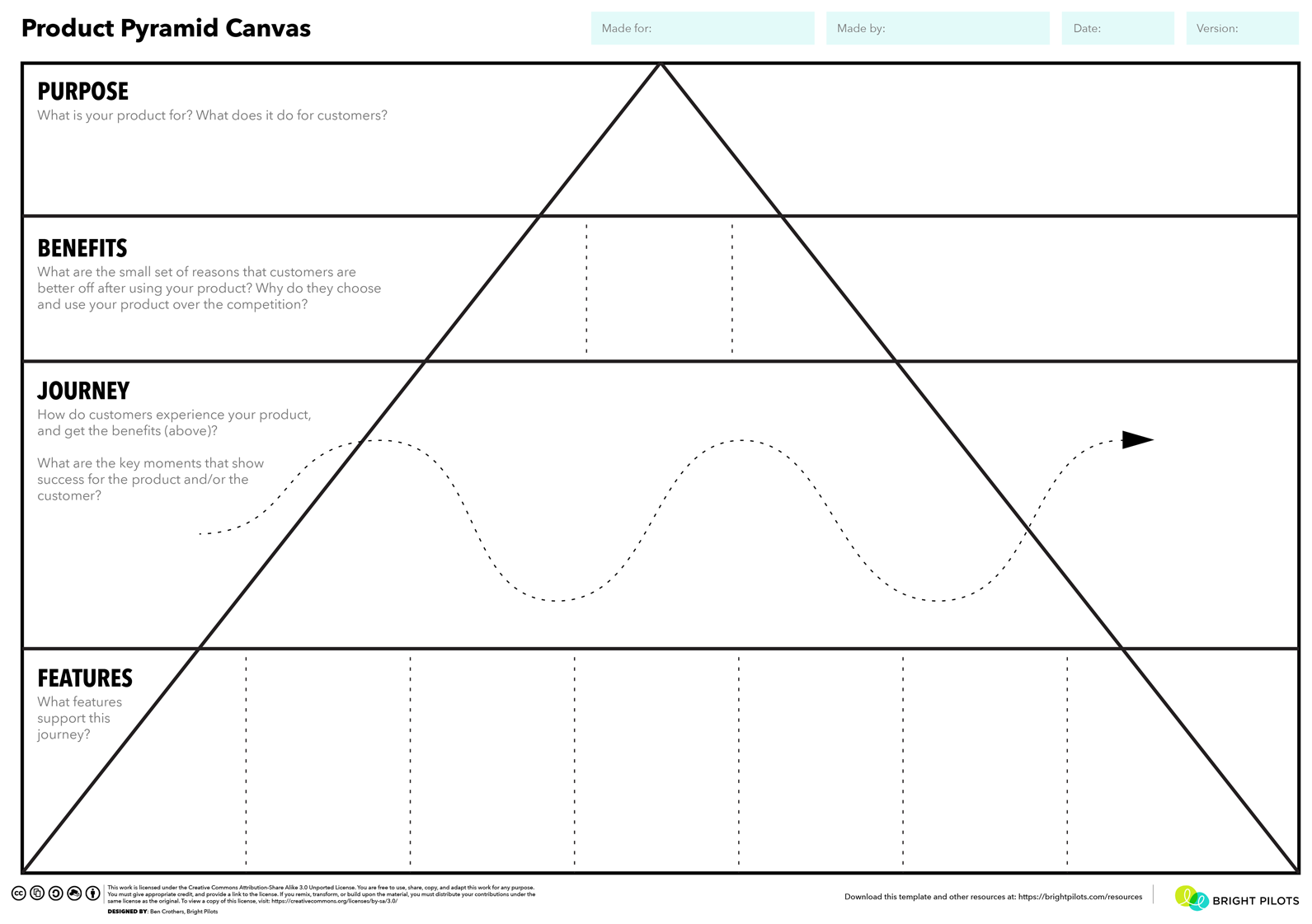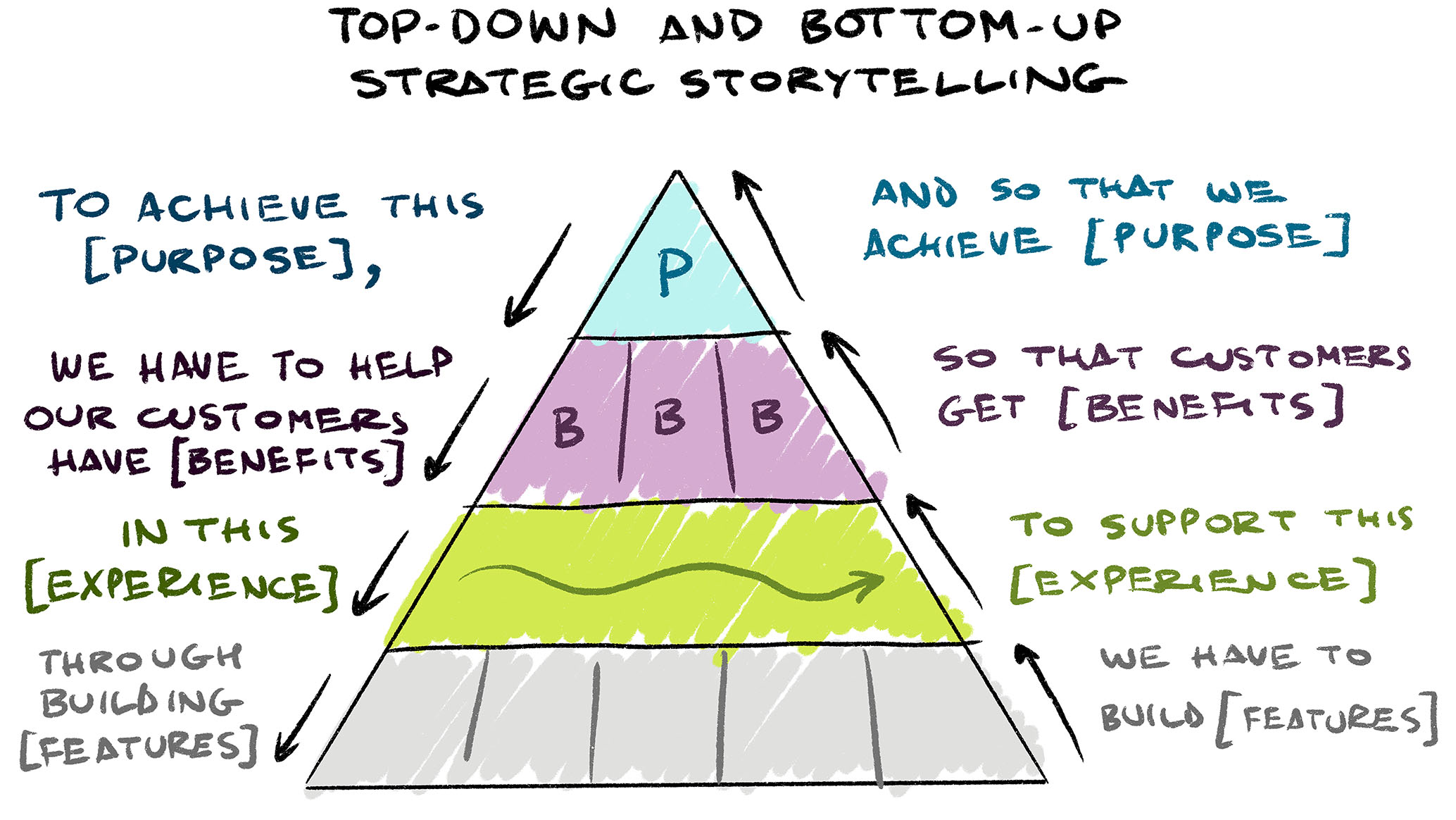Resource
Product Pyramid Canvas
Use this canvas to get a strategic view of your product, service, process, event, or other offering, to help improve value proposition, and benefits to customers.
Get your team and stakeholders on the same page about the strategic aspects of your product, service, or other offering, by connecting the value, experience, and features all in one map.

What problem does this canvas solve?
If you know you have a product strategy problem, this is for you.
Product and service teams usually have several important assets around, that describe their product, such as a value proposition statement, OKRs, some journey maps, and a roadmap. There may be some personas (or archetypes) that express the goals that the product helps people achieve, and maybe what unique benefits it provides.
As important as all these are, it’s usually really hard to get a sense of how all these work together as a cohesive product strategy, or something that speaks to the essence of why certain work is on the roadmap to do, for what end user benefit.
The Product Pyramid Canvas unites several important elements of product strategy into one map, to help with strategy communication, business cases, and prioritisation.
When to use this canvas
- As a diagnostic, to get a sense of where your product strategy is strong, and where it needs help
- Any product or feature kick-off, to establish how the product creates value for both business and customer.
- Any feature prioritisation meeting, to help prioritise and trade off various features and changes according to user benefit and business value.
- Strategic storytelling, to show your rationale, and influence stakeholders.
How to use this canvas
You can use this canvas either individually (especially if you’re the Product Manager), or as a team, to work out each layer, and how the layers relate to one another. It really helps to have the right decision makers and/or subject matter experts in the room for this.
You can start at any layer (the Journey layer is often the easiest), but it does help to start at the top, and work your way down. For each layer, discuss, distill and write your answers to the questions for each row:
- Purpose - What does your product (or feature, service or other offering) do for customers? What value does it create, for customers, and for the business? This is the smallest area of the canvas for a reason; try to express this is a short succinct sentence.
- Benefits - What are the benefits to customers for using this? Why/how are they better off? Why do they choose this over competitor offerings? Aim for up to three distinct benefits. Refer to this great set of elements of value for inspiration.
- Journey - How do customers experience your offering, to get these benefits? And what are the key moments that show success for the product and for the user?
- Features - What particular features are important to show, that support this journey (and provide these benefits), at various stages?
Each layer supports the layer above it. Once you have mapped all this, take a critical look at how the layers relate.
- Are there any gaps or assumptions, that need customer research?
- Are there great benefits in your product, but there’s something lumpy in the journey that prevents (or reduces) the ability to realise these benefits?
- How does each feature support the customer journey, and at what stage(s)?
Use it for strategic storytelling
You can also use it as a way of strategic storytelling, by constructing top-down or bottom-up arguments using each of the layers:

This resource contains:
- 1-page canvas, to either print out, or to copy in a notebook, or onto a whiteboard or online collaboration canvas
Let us run a session for you
Don’t want to run a research planning session yourself? We can run one for you, on its own or as part of a set of group activities for product discovery or product strategy.
Download free
Download this resource free and instantly, plus a new tip every week to help you and your team work brighter, with the Bright Pilots newsletter.
We honour your privacy, and we only use your information to contact you about the resources you requested and our relevant content, products, and services. You can unsubscribe with 1 click at any time.